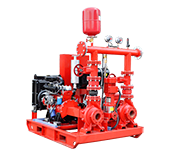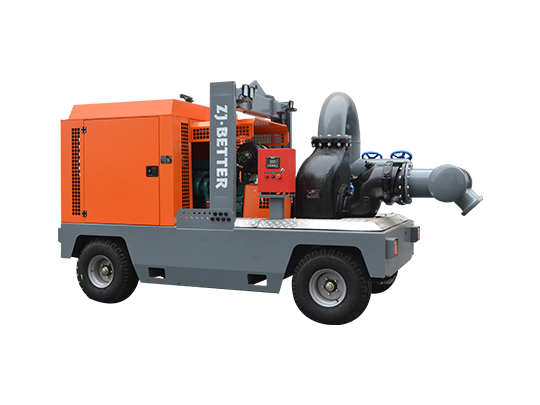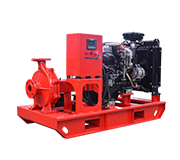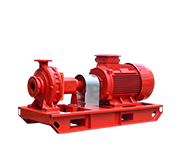1. There is a phenomenon of air binding
Before the centrifugal fire pump is started, the remaining air in the pump casing is not emptied. Because the air density is much smaller than that of water, the impeller rotates at a high speed after starting, but the suction port cannot form enough negative pressure, resulting in the inability to suck the liquid into the pump. inside the pump casing. If there is a leak in the suction line, the pump will also experience gas lock during operation.
2, the pump casing is not filled with liquid
The centrifugal fire pump did not empty the liquid in the pump casing after stopping the pump, and did not start for a period of time. When it was started again, the liquid in the pump casing was leaked due to the poor closure of the suction pipeline and the bottom valve, etc. Failed to find out that the pump casing was not filled with liquid in time, resulting in the fire pump not working properly;
3.The suction pipe does not extend below the liquid surface
When the centrifugal fire pump is started, especially the centrifugal pump installed on the fire truck, the suction pipe connected to the pump is not inserted below the liquid level of the fire tank or other water storage facilities, resulting in the pump not being able to discharge water normally after starting.
4. The outlet valve is not opened after the pump starts
After the pump starts normally, the valve on the outlet pipeline should be opened slowly until the rated flow parameter is reached. If the operator fails to open the water outlet valve in time due to negligence or due to the lack of necessary training at ordinary times, and makes mistakes in the busy state of emergency, the fire extinguishing agent for fire fighting still cannot be transported normally.
5. The impeller of the pump is reversed
Centrifugal fire pumps are often driven by electric motors. If the positive and negative poles of the motor are reversed, it will cause the impeller of the pump to reverse, especially for newly installed or repaired or replaced pumps. The impeller of the pump is reversed, the suction port cannot form a certain vacuum, and the liquid cannot be pressed to the outlet pipeline, so the liquid cannot be sucked in and discharged normally after starting.
6. There are defects in the design of pump inlet and outlet pipelines
The diameter of the suction and discharge pipes connected to the pump should match the performance parameters of the pump, usually the diameter of the suction pipe is slightly larger than the diameter of the discharge pipe. If the design of the pump outlet pipeline is not reasonable enough and the diameter is too large, the output flow of the pump will not meet the process requirements, thus affecting the normal output liquid of the pump. When the resistance of the suction pipeline is too large, although the vacuum gauge of the suction pipeline of the fire pump has a high degree of vacuum, the pump cannot suck liquid, resulting in no liquid flowing out of the extrusion pipeline. If the resistance of the extrusion pipeline is too large or the rotation of the impeller is blocked, although the pressure gauge of the fire pump extrusion pipeline has pressure, there will be no liquid discharged from the extrusion pipeline.
7. The filter screen, bottom valve or impeller are clogged
The filter screen is to prevent impurities from being sucked into the pump and cause the pipeline, impeller, etc. to be blocked or worn; the bottom valve is a one-way valve to prevent the liquid from flowing out of the pump along the suction pipe. If there is blockage in the filter screen, bottom valve or impeller, etc., it will also cause the pump to start, but no liquid will be sucked in or pressed out.
.jpg)






